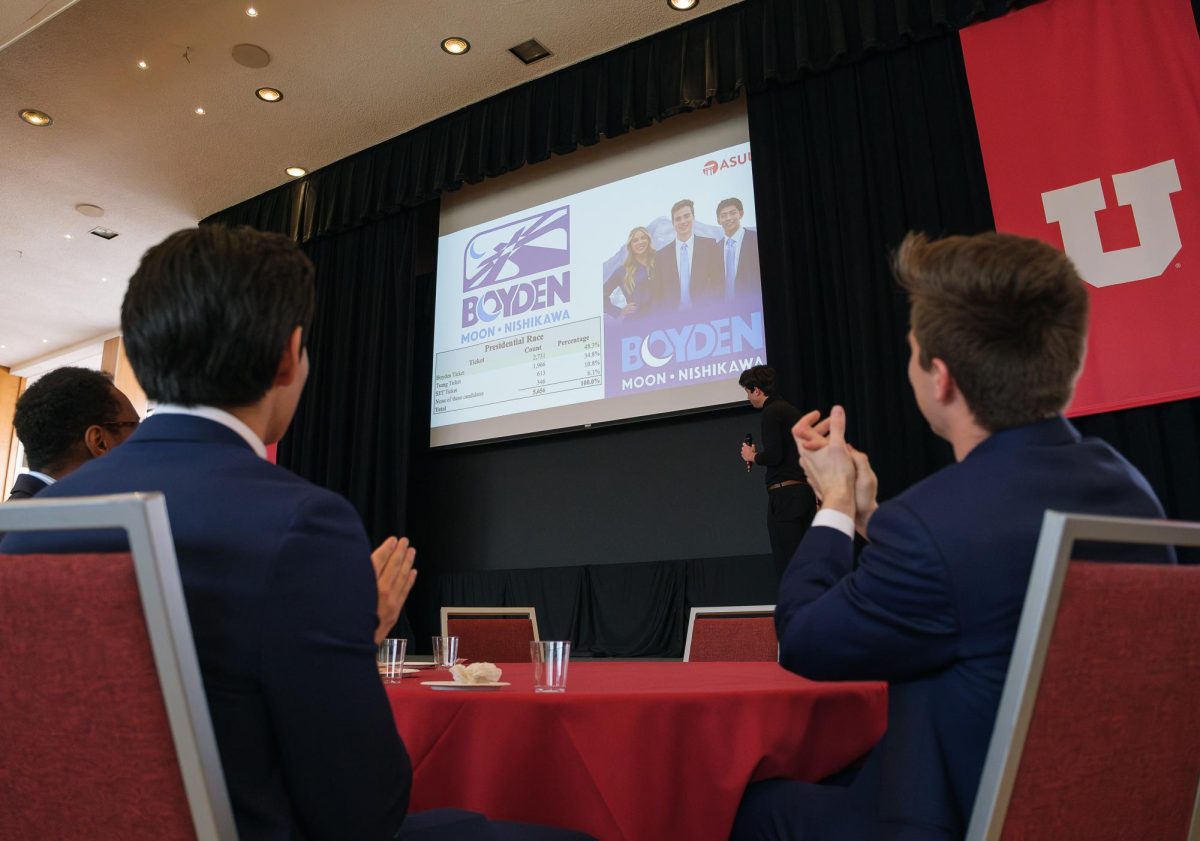NOTE: All data referenced in this article is available for download at the bottom of the page.
On average, male faculty members at the University of Utah made 48 percent more last year than their female counterparts.
In comparison, 2016 numbers from the United States Census Bureau indicated that working men, on average, were making 20 percent more than working women, according to the American Association of University Women.
The mean salary at the U was $97,485 in 2017. When broken down by gender, however, men made an average of $112,411, while women made an average of $75,929.
Using 2017 data from the state’s transparency website, The Daily Utah Chronicle calculated differences in salary for colleges and schools throughout the U. Positions included in the analysis are dean, assistant dean, instructor, assistant professor, associate professor, professor, distinguished professor, presidential professor and university professor. The investigation did not include adjunct, visiting or emeritus faculty members.
A disclaimer on the website says that data for some individuals “may only reflect a portion of the reporting period due to timing of hiring or leaving employment or other reasons.”
The group with the most egregious inequality was the College of Science, where men made 86 percent more than women. Following behind was the School of Medicine, where men made 45 percent more and the College of Engineering, where men made 41 percent more.
Other organizations where men were paid more than women included the College of Education, the College of Fine Arts, the College of Humanities, the College of Law, the College of Mines and Earth Sciences, the College of Pharmacy, the College of Social Work and the School of Dentistry.
However, men did not make more than women in all organizations at the U. In the College of Nursing, women were paid, on average, 95 percent more than their male colleagues and at the School of Business, women were paid 39 percent more than men.
Women also made more than men, on average, in the College of Architecture and Planning, the College of Health and the College of Social and Behavioral Science.
The salary gap may be caused in part by who most frequently receives opportunities for tenure.
Faculty at the U are divided into two groups — tenure-line and career-line. Tenure-line faculty includes those who have tenure or are eligible to receive tenure. Positions held by tenure-line faculty include instructor, assistant professor, associate professor, professor and the special ranks of distinguished professor, presidential professor and university professor.
Career-line faculty may hold any of the above positions, except those with special honors. Career-line faculty fall under the categories clinical, lecturer or research.
The primary difference between tenure-line and career-line faculty is the number of responsibilities undertaken by the employee. While tenure-line employees must meet a range of expectations, including both instruction and research, career-line employees have a more specialized focus.
Employees in both categories generally commit to a long-term, full-time position at the university, unless otherwise specified in their appointment. Of the four basic positions for faculty members, professor is the most prestigious followed by associate professor, assistant professor and instructor.
While The Daily Utah Chronicle was unable to obtain information specifying whether each faculty member was tenure-line or career-line, it did obtain information on the number of men and women who held assistant professorships, associate professorships and professorships.
In 2017, there were 3,834 men and women in these three ranks at the U — 2,413, or 63 percent, were men, and 1,421, or 37 percent, were women.
There were 1,232 were professors, 1,078 associate professors and 1,524 assistant professors. Women were more frequently appointed to lower ranks, with women making up 27 percent of professors, 40 percent of associate professors and 43 percent of assistant professors.
A June 2017 study conducted by a researcher at the University of North Carolina at Chapel Hill found that women receiving a promotion to tenure at lower rates than men can more frequently be ascribed to discrimination in the evaluation process rather than lower productivity rates.
“To reduce gender inequality, cultural interventions within departments and institutions will likely be more fruitful than individual-oriented strategies aimed at helping women become more productive,” the study read.
While disparities in salary and opportunity exist between genders at the U, the school is working to eliminate those differences.
“Salary equity is very important to the University of Utah,” said U spokesperson Chris Nelson. “It is an issue the university continues to study and evaluate on a department-by-department basis. While important progress has been made in closing salary gaps, there is always work to do.”
The U has a policy against discriminating based on gender, and since the 1970s has been taking steps to make the school more inclusive of women. The Women’s Resource Center at the U was founded in 1971, and among the causes it has continually advocated for is the hiring of more women faculty.
Between 2014 and 2017, the U launched a faculty hiring initiative that aimed to increase diversity, primarily focused on the racial and ethnic backgrounds of potential employees. Information on the race and ethnicity of faculty is not publicly available. The initiative provided resources to all departments of the U to supplement the salaries of faculty from diverse backgrounds who were hired during that period.
“Female faculty in fields where they are significantly underrepresented, along with faculty of other underrepresented identities, may be considered on a case-by-case basis, if resources permit,” the initiative read.
In 2016, the U began using a spreadsheet to budget all new hires and to track efforts in hiring a more diverse faculty. During the years following the initiative, the U is assessing its effectiveness.
“It’s important to note that equity does not mean that everyone makes the same salary,” Nelson said. “That said, we do not want faculty to be significantly out of step with those in the same departmental cohort. When we find faculty whose salaries need to be adjusted, we make those investments to address equity.”
@emilyreanderson
This article was updated to include a disclaimer from the state’s transparency website.




















Becca • Apr 13, 2018 at 3:14 pm
I encourage you to review the disclaimers on the state’s transparency website that clearly indicate the employee compensation figures should not be construed as salaries: https://www.utah.gov/transparency/disclaimers.html.
As indicated on the website, the figures represent actual amounts paid and may not be representative of annual salary rates due to timing of hire, termination, unpaid leave, reduced work hours in a week, etc. It is not possible to annualize the information available on the transparency website to put everyone’s figures on an equal basis for comparison, so comparing the figures and driving conclusions from them is somewhat concerning.
Keith • Apr 11, 2018 at 4:21 pm
Found this interesting video. Please excuse the rude terminology but the facts are interesting. I do believe that improvements can be made still in other areas related.
https://www.facebook.com/newsbusters/videos/1857737840915922/
Aaron McDonald • Apr 6, 2018 at 12:33 pm
Implying the wage gap, in these instances, as being founded on discrimination seems inaccurate. In the same way I doubt that the school of medicine actively discriminates against women, I also doubt that the nursing school actively discriminates against men. There’s clearly a correlation between the number of men and women in a given field, and the average amount of pay for men and women in that field. There are far more women in nursing than men, thus there are going to be more women who take on higher-level and higher-paying positions. Women and men also make different choices. I sometimes wish that articles like this would advocate more for a woman’s ability to choose.